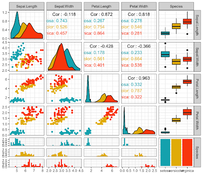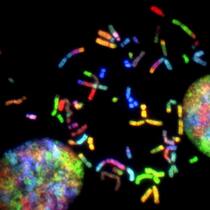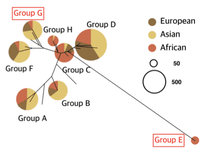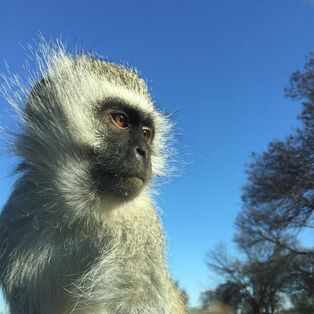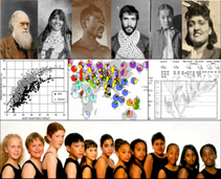Project Design and Statistics for Biological Anthropology (CAS AN/BI 588)
|
Statistical methods are the backbone of scientific research, but are often given short shrift when designing research in biological anthropology. The purpose of this seminar is two-fold: 1) to familiarize students with the use of the statistical programming package R and R Studio through both swirl and in class tutorials with real data, and 2) to discuss select advances in statistical techniques from related disciplines that may help students while designing and implementing their own research projects. Potential foci of discussion may include statistical methods for accounting for small sample sizes or non-normal data, using power analyses and preliminary statistics to justify data collection design, and the use of mixed models and information theoretic approaches to analyze a number of different data types. Although there will be a discussion element to the seminar, students should see this course as a guided workshop or practicum in which we learn by working with both our own and previously published datasets. Texts used in the class include R in Action and Introductory Statistics with R.
This course fulfills a single unit in each of the following BU Hub areas: Scientific Inquiry II, Quantitative Reasoning II, Teamwork/Collaboration. This course has also been subject to substantial modification to make it less daunting to students. You can learn more about the pedagogical practices implemented in this course in my Lightning Talk to BU's Center for Digital Learning and Innovation. |
Anthropology and Human Heredity (CAS AN 551)
|
This course uses human genomic variation as a framework within which to better understand human evolutionary history. We first familiarize ourselves with the methods, techniques, and basic biology that allow us to understand human variation at its most basic level: the genome. From there, we expand our view to better grasp human diversity and what it can tell us about our evolutionary history from our last common ancestor with other apes to how modern human populations have diverged, specialized and then interacted during our spread from East Africa to every part of the globe. Finally, we take a close look at the biological underpinnings of contemporary human variation and what impact this knowledge can have on public policy, health and disease, and human diversity, and their intersections with social issues such as racism, bioethics, and eugenics.
|
Human Population Genetics (CAS AN/BI 333)
|
This course uses human genomic and population variation as a framework within which to better understand human evolutionary history. We do this by familiarizing ourselves with the methods, techniques, and biology that allow us to understand human variation at its most basic level: the genome. Throughout the course, we will download, analyze, and draw conclusions about human evolutionary and population history from open-source human genomic datasets derived from the 1000 Genomes Project. From there, we expand our view to better grasp human diversity and what it can tell us about our evolutionary history from our last common ancestor with other apes to how modern human populations have diverged, specialized and then interacted during our spread from East Africa to every part of the globe. Finally, we take a close look at the biological underpinnings of contemporary human variation and what impact our knowledge of these systems can have on our conceptions of public policy, health and disease.
This course fulfills a single unit in each of the following BU Hub areas: Scientific Inquiry II, Quantitative Reasoning II, Research and Information Literacy. |
Primate Behavioral Ecology (CAS AN 336)
|
The objective of this course is to develop a working understanding of non-human primate behavior, and ecological models that attempt to explain the evolution of these behaviors. We will briefly examine the evolution and biology of the Order Primates, followed by intensive studies of primate behavior and ecology using a number of theoretical frameworks ranging from socioecological theory to sexual selection. Our primary goal is to understand the adaptive value of the behaviors observed in primates so that we may better understand our own behavior as humans. The backbone of the course will be Strier’s Primate Behavioral Ecology, which will provide us with a base from which we will be better able to understand both the primary literature and readings in more specialized texts. Students are invited to conduct their own behavioral ecology study with primates at the Franklin Park Zoo.
|
The Evolutionary Biology of Human Variation (CAS AN/WS 233)
|
What is the biology of being white? Or black? Why do some of us become obese, and why would we evolve habits that are harmful to our health? Is biological sex really a dichotomy, and how does it differ from or inform gender? If humans are all 99.9% genetically identical, why are we all so different, and where does this variation come from? In this course we strive to address these questions by focusing on the interface between biology and culture to gain a better understanding of the etiology, history, and biological meaning of some of our most culturally enagaged identities including race, sex, gender, sexual orientation, and body type. We begin by establishing a firm footing in the evolutionary biology of humans, and from there we study how history, medicine, and politics interact with our biology to make meaning in contemporary US culture. Texts discussed in this course include Skloot's The Immortal Life of Henrietta Lacks; Fausto-Sterling's Sexing the Body; and Jablonski's Living Color.
To learn more about this class, please see my American Cultures Faculty Spotlight Interview, from when I taught this course at UC Berkeley in the Fall of 2014. |
Field Course: Primate Conservation Genetics
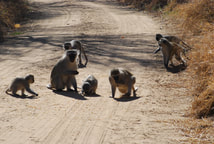
The University of Wisconsin - Milwaukee is hosts a field course in Primate Conservation Genetics. Students work with Dr. Trudy Turner (UWM) and Dr. Christopher Schmitt (Boston University) to observe, study, and collect noninvasive genetic samples on wild non-human primates across South Africa, all while completing coursework on primate behavior, ecology, conservation, and genetics. The capstone of the course will be conducting a population genetics study on the samples YOU collect from the field in the Department of Genetics at the University of the Free State in Bloemfontein. At the end of the course, students join us as we present the work we've done at the annual meeting of the South African Primatology Association (PEGG).
Field Course: Primate Behavior and Ecology
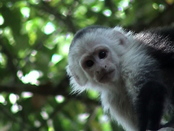
This course covers the behavior and ecology of wild primates from an evolutionary perspective. Emphasis is given to New World primates, especially the three species present at La Suerte Biological Field Station in Costa Rica: Central American spider monkeys (Ateles geoffroyi), white-faced capuchins (Cebus capucinus) and mantled howling monkeys (Alouatta palliata). Students who enroll in the course are encouraged to contact me so that we can tailor course content to student interests.
